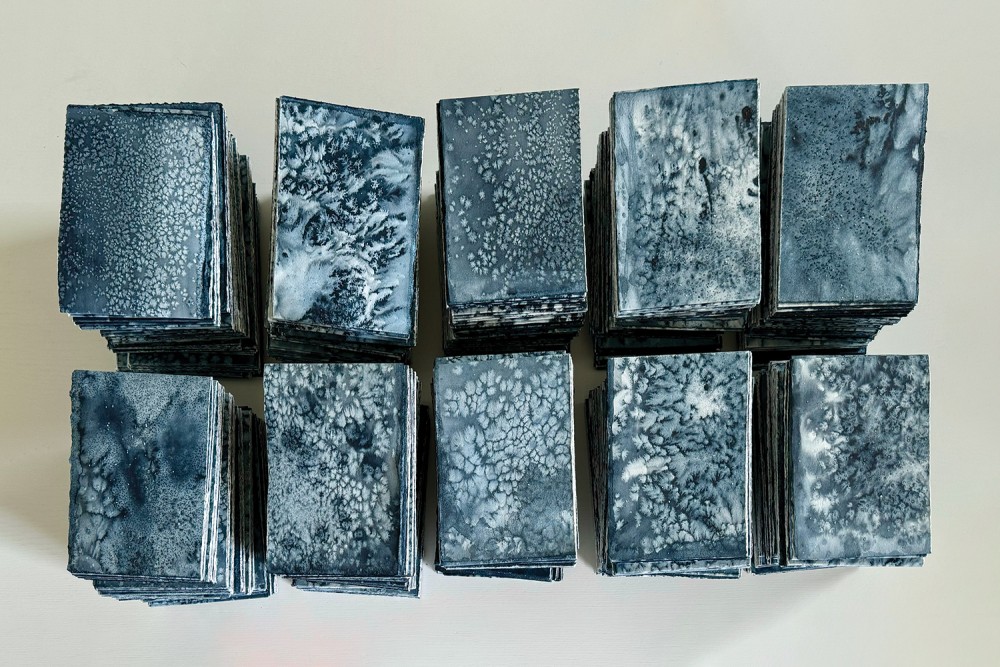Julia Hendrickson’s Prayer Books

Used by permission of the artist.
“This is the practice of focused attention,” explains the card included with Julia Hendrickson’s art volumes. Prayer Books involves 100 concertina-style books, each comprised of a single sheet of paper repeatedly folded. The project features the artist’s signature method: loads of water, Payne’s gray watercolor, salt, and time for the aqueous content to bloom, evaporate, and permeate. It is also a spiritual discipline. It involves the body in a daily ritual of petitioning for a world that feels like it’s slipping away. While this act of creation is a prescription for fluidity—endorsed by pages of indigo saltwater tides, swells, and saturated droplets—its structural format also provides ballast.
Hendrickson invites the viewer to “slowly move through the book noticing the textures (visible and tangible, abstract and spiritual).” This is a primer on associating the material with the immaterial, a manual modeling the ways art transforms the ordinary. Time, elements, places, and people undergo conversion. The artist instructs viewers to “reflect on thoughts that arise,” to “pray through” them, and then finally to move to rest “in the quiet.”
Thoughts float toward baptism. The muffled silence of an underwater grave reorients the meaning and practice of life. Romans 6:4 puts it this way: “Therefore, we have been buried with him by baptism into death, so that, just as Christ was raised from the dead by the glory of the Father, so we too might walk in newness of life.” Ascending from murky depths, the body strives for new breath, making the first gasp a prayer utterance.
As an immersive read, Prayer Books captures the death-life continuum through its tangible approach to spiritual formation. It is a liturgically oriented project as well, a gesture of gratitude with an affinity for the Book of Common Prayer’s celebration of baptism: “We thank you, Almighty God, for the gift of water. Over it the Holy Spirit moved in the beginning of creation.” Hendrickson’s visual catechism of bloom, evaporation, and permeation proclaims a poetic method for engaging chaos. Moreover, 100 books represent a labor of love and an effort to build resilience and extend hope. Currents recede and return. Embedded on the pages of Prayer Books lies an implicit axiom: that which slips away rushes back with force.





